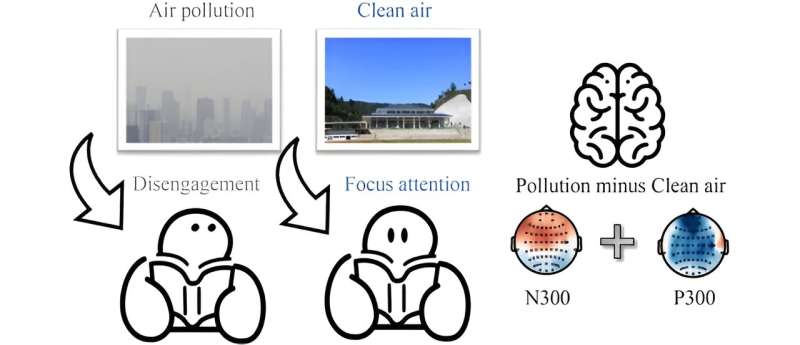This article has been reviewed according to Science X's editorial process and policies. Editors have highlighted the following attributes while ensuring the content's credibility:
fact-checked
proofread
Study reveals air pollution's distracting effect on attention, unveiling underlying neurocognitive mechanisms

Air pollution, a major global health risk, is known for its detrimental physical effects, but its impact on cognitive functions like learning and driving has only recently been explored. Prior studies have indicated that exposure to air pollution can impair cognitive performance, behavior, and productivity, but the underlying neurocognitive mechanisms remained largely unexplored until now.
In a study published in the journal Frontiers of Environmental Science & Engineering, a research team from Nanjing University utilized an adapted dot-probe task paradigm and the ERP technique to investigate how visual stimuli of air pollution influence attention allocation.
Participants were shown cues (either pollution or clean air images) before responding to targets in either the same or opposite visual field. Behavioral measures indicated that pollution images resulted in higher response accuracy in trials requiring attention shifts.
ERP analysis showed that pollution images evoked lower N300 amplitudes, suggesting less attention-capturing effects, while these cues correlated with higher P300 amplitudes in attention-holding trials, indicating the need for more cognitive resources to maintain attention.
"Air pollution not only poses a significant threat to physical health but also impacts cognitive functions in a subtle yet profound manner," explains the study's lead researcher. "Our findings offer the first neuroscientific evidence of how air pollution distracts our attention, emphasizing the need for clean air initiatives to enhance cognitive well-being."
The study concludes that visual exposure to air pollution distracts attention and impacts task performance, with pollution cues resulting in lower accuracy in attention-holding trials but higher in shifting trials. Clean air captures more attention, as indicated by larger N300 amplitudes.
These findings highlight the neurocognitive impact of air pollution, bridging environmental science and social cognitive neuroscience. The study urges attention to this phenomenon, particularly in developing countries.
More information: Jianxun Yang et al, Clean air captures attention whereas pollution distracts: evidence from brain activities, Frontiers of Environmental Science & Engineering (2023). DOI: 10.1007/s11783-024-1801-x




















